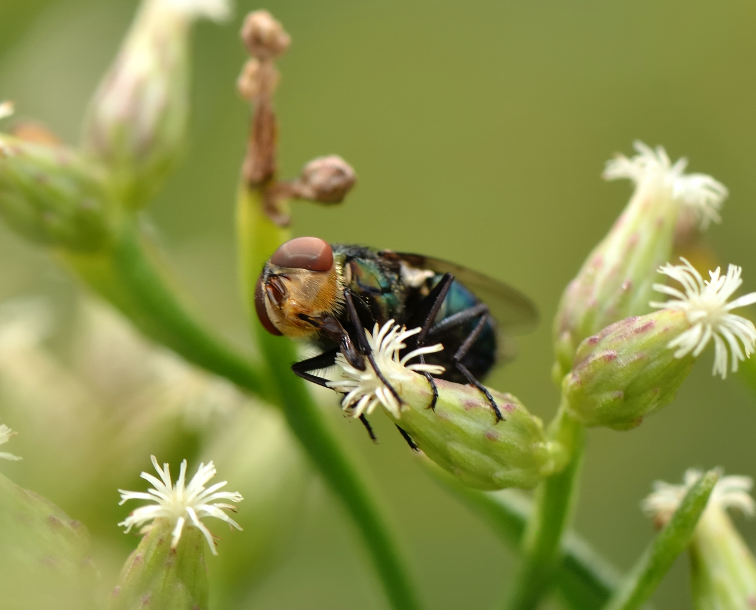In today’s deer hunting history lesson, let’s take a look at how an entire region was nearly screwed over by something smaller than your littlest fingernail.
Insects are the bane of every living, breathing creature on the planet, and many of them make life downright miserable for the white-tailed deer. But did you know that a measly fly — specifically the screwworm fly (Callitroga Americana) — was once the biggest killer of deer in the southern half of the United States?
It’s true. By 1900, there were fewer than 500,000 deer in the continental U.S., but regulated sport hunting and conservation efforts helped bring back the whitetail species back with a vengeance. By 1950s, we not only had deer hunting seasons practically everywhere, the hunting was pretty good (but nothing near today’s levels).
Enter the little screwworm fly. This insect made its living, so to speak, by laying its eggs in the open wounds of mammals. Commercial livestock were prime targets, but so were wild deer. In deer, the female screwworm flies would often lay their eggs in the animal’s naval. One fly (about twice the size of your average housefly) would lay up to 400 eggs at a time, and the larvae could hatch in as little as 12 hours.

According to Purdue University research, a single female screwworm could lay as many as 2,800 eggs during the fly’s average lifespan of about a month. Once inside the host animal, the screwworm larva would grow to a half-inch in size within five to seven days. If left untreated, the massive infestations of maggots could easily kill a beef cow within a week.
Read more: MEET THE BOT FLY: ANOTHER NASTY DEER INSECT
Read more: WHAT CAUSES THESE HUGE GROWTHS ON A DEER’S CHEST?
Read more: WHAT WE KNOW ABOUT UNSIGHTLY WARTS ON DEER
Coincidentally, the maggots would eventually fall out of the wound channels and to the ground, where they would tunnel themselves into the soil to complete their growth cycle, eventually re-emerging as flies (and starting the process all over again).
In wild deer herds, the screwworm was responsible for widespread decimation. Before 1958, it was estimated that screwworm infestations were responsible for single-year deer eradications of 40, 60 and even 80 percent of entire whitetail herds. In fact, according to pioneer whitetail behaviorist Leonard Lee Rue III, screwworms alone caused annual fawn-crop losses of up to 80 percent in Texas. And in Florida, the flies were believed to have wiped out more than 60 percent of the entire deer herd by the early 1950s.
You might have noticed that much of this blog post is written in past tense. That’s the good news. Because of the threat to American farmers (estimated at more than $400 million annually), the U.S. Department of Agriculture’s Ag Research Service developed a program to eradicate screwworms.
According to the Purdue College of Veterinary Medicine, laboratory-raised flies were sterilized by gamma rays and then spread by aircraft over infested areas. As millions of sterile flies flooded an area, the sterile males mated with fertile female flies. The resulting eggs did not hatch. The technique was tested in a field trial on the Dutch island of Curacao in 1954 and then deployed in Florida by 1957. By 1959, screwworms had been completely eradicated from the Southeast.
What’s on TV? Check out the full schedule of hunting, fishing, trapping and other outdoors-related programming that’s playing on Pursuit today, tomorrow and the rest of this week HERE.

